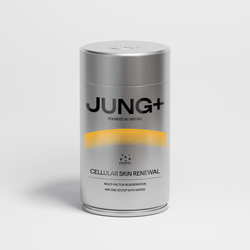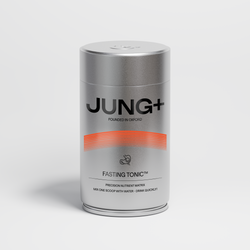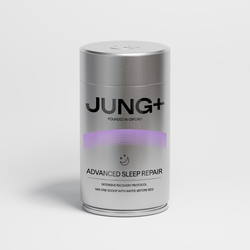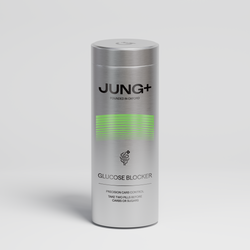Meet the cellular champions of skin health
The modern cosmetic industry, addressing questions about age-related skin changes, actively incorporates the terms "collagen," "elastin," and "hyaluronic acid." These compounds are crucial for maintaining the tone and elasticity of our skin, and their inclusion in cosmetic products helps prevent the onset of age-related skin changes. However, do we truly understand these compounds, and, more importantly, where do they originate in our skin?
So, let's meet fibroblasts! These cells in our body provide the answer to where these complex yet mysterious collagens, elastin, and hyaluronic acid come from. Furthermore, fibroblasts act as the genuine cellular guardians of skin health, producing several other vital connections that ensure the normal functioning of the skin.
Fibroblasts explained: Role, function, and importance
Fibroblasts are cells that play a crucial role in maintaining the structural integrity and health of our skin. They are not limited to the skin alone; they are also present in joints, internal organs, and the intestinal mucosa. Within the dermis, which constitutes the average thickness of the skin, fibroblasts are often referred to as the architects of the dermal matrix. Fibroblasts exist in two forms: active and inactive [1].
In the active form, fibroblasts produce essential components such as collagen, fibrin, elastin, tenascin, nidogen, and laminin, serving as the foundational "building materials" for the skin. Additionally, fibroblasts stimulate the growth factors of skin cells, regulating the growth of all skin cells, promoting collagen and elastin production, and supporting the enlargement and growth of keratinocytes—the upper layers of the skin. This dynamic process ensures the active renewal, restoration, and youthfulness of the skin. As fibroblasts age, their ability to divide and produce these essential compounds diminishes, leading to the appearance of wrinkles, fine lines, and other aging-related changes [2].
In their inactive form, known as fibrocytes, fibroblasts contribute to wound healing actively migrating in damaged zones where they participate in pathogen clearance, tissue regeneration, wound closure and angiogenesis. They also activate cell growth processes, accelerate tissue proliferation, aid in the rejuvenation of damaged skin, and play a role in the formation of blood vessels, directing the cellular immune system against bacteria and other foreign agents [1].
Fibroblasts exhibit a diverse range of types, differing in location, origin, implemented cellular mechanisms, and external cellular contacts. While fibroblasts can be harnessed for therapeutic purposes, such as scar-free wound healing or maintaining youth, they are also implicated in various skin diseases.
The involvement of fibroblast lineage features becomes particularly crucial in diseases characterized by excessive fibrosis and scarring, such as scleroderma, keloids, graft-versus-host disease, and pulmonary fibrosis. Epithelial tumors consist of a combination of epithelial elements, fibroblasts, and extracellular matrix (ECM) components. Cancer-associated fibroblasts (CAFs) play a critical role in the development of solid tumors [3].
In summary, fibroblasts are a heterogeneous group of cells involved in a variety of processes, from wound healing to maintaining youthful skin.
How fibroblasts combat skin aging
We have already touched on the fact that fibroblasts play a decisive role in the fight against skin aging. Let’s dive deeper.
One of the main mechanisms for combating skin aging involves the participation of fibroblasts in the synthesis of key structural proteins - collagen, elastin, and hyaluronic acid [1]. These proteins form the basis of the skin's extracellular matrix, providing essential support, elasticity, and moisture. In particular, collagen gives the skin strength and elasticity, while elastin provides flexibility. Thanks for its moisture-retaining properties, hyaluronic acid promotes skin hydration and elasticity.
The fibroblasts’ role in immune response [4] and maintenance of barrier function of the skin provides reliable protection against signs of aging associated with the development of acute or chronic inflammation. Fibroblasts participate in the prevention of premature aging of skin cells and actively promote their renewal [5].
Fibroblasts also combat age-related changes, stress, and environmental influences by regulating various cellular processes. One mechanism involves the role of fibroblast growth factors (FGF) in dermal repair and remodeling, contributing to the anti-aging process in the skin. FGF activates signaling pathways that promote cell regeneration and repair, as well as the synthesis of collagen and elastin, which are crucial for skin firmness and elasticity [6]. Aquaporin 3 (AQP3) has been identified as a key regulator of photoaging in skin fibroblasts, controlling autophagy and preventing aging [7].
Fibroblasts and collagen synthesis
In the body, cells are not tightly packed; an extracellular matrix exists between them, providing orderliness, communication between cells, and even pathways for their migration.
Active fibroblasts synthesize tropocollagen molecules in response to mechanical stretching, releasing them into the matrix, where the assembly of collagen fibers occurs [8]. Collagen serves as the core structural network of the skin's extracellular matrix, to which everything else is attached. There are more than 28 types of collagens and over 40 genes encoding collagen, all produced by fibroblasts [9]. The most common are types I through IV, with type I comprising over 90% of the collagen in the human body [8]. Interestingly, these same fibroblasts break down aged bundles. Additionally, as the produced collagen folds into fibers, they attach to fibroblasts, influencing their phenotype [10].
During the breakdown of collagen polypeptide chains, regulatory factors in the form of peptides are released, actively participating in the reparative process [11]. Thus, collagen not only provides structural support but also plays a regulatory role in morphogenesis, differentiation, migration, synthetic activity of fibroblasts, and the regeneration of connective tissue.
Fibroblasts and hyaluronic acid volume
Hyaluronic acid is a naturally occurring substance, a linear glycosaminoglycan, found in the body, particularly in the skin, eyes, and connective tissues. On average, a person weighing about 70 kg will have approximately 15 grams of hyaluronic acid, with 5 grams cycled daily [12].
The main function of hyaluronic acid is to retain water, providing moisture and elasticity to the skin. However, it is also involved in other processes that ensure the normal functioning of the body, including differentiation, proliferation, cell development, and recognition [13]. Moreover, when the skin is damaged, parts of the broken molecules can attract macrophages (bacteria-eating cells), thus inducing an immune response [14].
In the skin, fibroblasts are responsible for the synthesis, regulation, and proper distribution of hyaluronic acid molecules in the extracellular matrix. Fibroblasts not only provide consistency but can also increase the total amount of hyaluronic acid, keeping the skin moisturized and youthful.
Hyaluronic acid is a large molecule, and its molecular weight depends on how many water molecules it has bound. As we age, hyaluronic acid molecular weight tends to decrease. This process may be associated with aging fibroblasts, impaired synthesis of hyaluronic acid molecules, and a decrease in the enzymatic activity of the proteins involved in its metabolism. All these processes may be associated with ultraviolet (UV) exposure, high levels of oxidative stress, and the loss of proteostasis in fibroblasts.
Factors affecting fibroblast health and functionality
How can fibroblasts be protected and improved? There are certainly a number of preventive measures that can be suggested:
- Be active: Increased mechanical stress stretches fibroblasts, resulting in increased collagen production and decreased collagenase production, the most important enzyme for collagen synthesis [10].
- Reduce inflammation level: Collagen production by fibroblasts is affected by transforming growth factor-beta in the presence of other inflammatory mediators. In addition, cytokines and viral infections have been identified as regulators of fibroblast proliferation and collagen synthesis [6].
- Reduce stress: The production of hyaluronic acid declines due as a response to high levels of cortisol. This stress hormone affects fibroblast activity [15].
- Use supplements: Supplements can help decrease the level of oxidative stress and ongoing peroxidation processes, modulate collagen and hyaluronic acid production in fibroblasts. Let’s delve a bit more into the particular supplements.
Compounds that optimize fibroblast performance
Astaxanthin has been found to possess various beneficial properties for fibroblasts. It inhibits autophagic cell death by reducing reactive oxygen species and oxidative stress [16]. Additionally, astaxanthin increases collagen production by inhibiting the mRNA expression of collagen-degrading enzymes and inducing their TIMP1 gene expression in human dermal fibroblasts [17].
Ceramides have been discovered to promote the formation of collagen fibers and microfibrils in human skin fibroblasts, positively impacting skin elasticity [18]. Furthermore, ceramides have been shown to enhance fibroblast proliferation and type I collagen mRNA expression [19].
Vitamins C and E have been studied in various contexts concerning fibroblasts. The photoprotective potential of both vitamin C and vitamin E was investigated in human dermal fibroblasts exposed to UV. Both vitamins demonstrated the ability to suppress the UV-induced increase in the mRNA expression levels of collagen-degrading enzymes [20].
N-acetylglucosamine (NAG) has various effects on fibroblasts. In human skin fibroblasts, the addition of NAG to the culture medium increased collagen and hyaluronic acid synthesis, enhancing the ability to heal damaged cells [21]. Moreover, NAG stimulated the synthesis of glycosaminoglycans, including hyaluronic acid [22]. Additionally, NAG inhibited UV-induced collagenases, providing protection to human skin fibroblasts from UV damage [23].
Verisol (Specific Collagen Peptides) is a clinically proven, patented form of bioactive collagen peptides derived from grass-fed, pasture-raised bovine. Collagen peptides are derived from collagen proteins hydrolyzed to optimize their bioavailability [24]. Verisol, for example, helps to maintain a sufficient level of peptides required for collagen production.
Niacinamide has been found to exhibit a favorable effect on fibroblast activity, collagen production, cell proliferation, migration, and terminal differentiation. It increases collagen synthesis in fibroblasts, cell migration and proliferation [25]. Additionally, niacinamide treatment has been shown to restore the bioenergetic efficiency and power of old fibroblasts, and it improves the number of mitochondria and membrane potential of young fibroblasts [26].
Hyaluronic acid (HA) oral supplementation may suppress wrinkles and improve skin condition [27].
Celebrating the true heroes of youthful skin
In the quest to keep skin looking youthful and radiant, a silent hero—fibroblasts—is hard at work beneath the surface. These unsung champions, living deep within our skin, play a key role in maintaining its structure, elasticity, and overall health. They support the dynamic process that ensures our skin is actively renewed, restored, and forever youthful. Whether active or inactive, they provide protection, health, and beauty to the skin.
Don't overlook these silent guardians in your pursuit of skin beauty—they hold the key to maintaining its vitality and youthful glow.
Fibroblasts are a crucial part of our skin, our health, and our aging. They play a key role in how our skin looks and feels. Protecting these important cells is a mandatory part of our daily routine!
- Fibroblasts: Origins, definitions, and functions in health and disease [2021]. Cell.
- Age changes in the number and proliferation of fibroblasts in the human skin [2012]. Advances in Gerontology.
- Fibroblast heterogeneity: implications for human disease [2018]. Journal of Clinical Investigation.
- Fibroblasts as confederates of the immune system [2021]. Immunological Reviews.
- The bright side of fibroblasts: molecular signature and regenerative cues in major organs [2021]. NPJ Regenerative Medicine.
- Fibroblast Growth Factors: A Controlling Mechanism of Skin Aging [2019]. Skin Pharmacology and Physiology.
- Autophagy induction regulates aquaporin 3-mediated skin fibroblast ageing [2022]. British Journal of Dermatology.
- Collagen Structure, Synthesis, and Its Applications: A Systematic Review [2022]. Cureus.
- Collagen Biosynthesis, Processing, and Maturation in Lung Ageing [2021]. Pulmonary Medicine.
- Looking older: Fibroblast Collapse and Therapeutic Implications [2008]. Archives of Dermatological Research.
- Collagen in Wound Healing [2021]. Bioengineering (Basel).
- Hyaluronan catabolism: a new metabolic pathway [2004]. European Journal of Cell Biology.
- Intra-articular hyaluronan treatment for osteoarthritis [1997]. Annals of Rheumatic Diseases.
- Hyaluronic Acid: Molecular Mechanisms and Therapeutic Trajectory [2019]. Frontiers in Veterinary Science.
- Science of Hyaluronic Acid Beyond Filling: Fibroblasts and Their Response to the Extracellular Matrix. [2015]. Plastic and Reconstructive Surgery.
- Astaxanthin Inhibits Autophagic Cell Death Induced by Bisphenol A in Human Dermal Fibroblasts [2021]. Antioxidants.
- Enriched Astaxanthin Extract from Haematococcus pluvialis Augments Growth Factor Secretions to Increase Cell Proliferation and Induces MMP1 Degradation to Enhance Collagen Production in Human Dermal Fibroblasts [2016]. International Journal of Molecular Sciences.
- Anti-skin-aging effects of human ceramides via collagen and fibrillin expression in dermal fibroblasts [2022]. Bioscience, Biotechnology and Biochemistry.
- Effect of different concentrations of collagen, ceramides, N-acetyl glucosamine, or their mixture on enhancing the proliferation of keratinocytes, fibroblasts and the secretion of collagen and/or the expression of mRNA of type I collagen [2008]. Journal of Food and Drug Analysis.
- Photoprotective potential of lycopene, beta-carotene, vitamin E, vitamin C and carnosic acid in UVA-irradiated human skin fibroblasts [2002]. Free Radical Biology and Medicine.
- N-Acetylglucosamine modulates function of the skin fibroblasts [2013]. Journal of Cosmetic Science.
- N-Acetylglucosamine suppresses collagenase activation in ultraviolet B-irradiated human dermal fibroblasts: Involvement of calcium ions and mitogen-activated protein kinases [2011]. Journal of Dermatological Science.
- The effect of N-acetylglucosamine as a substrate for in vitro synthesis of glycosaminoglycans by human peritoneal mesothelial cells and fibroblasts [1998]. Advances in peritoneal dialysis.
- What is VERISOL® B Collagen [2022]? Available at: https://www.blueshiftnutrition.com/blogs/thewavelength/what-is-verisol%C2%AE-b-collagen
- The potential of a niacinamide dominated cosmeceutical formulation on fibroblast activity and wound healing in vitro [2014]. International Wound Journal.
- The effect of niacinamide on reducing cutaneous pigmentation and suppression of melanosome transfer [2002]. British Journal of Dermatology.
- Oral Hyaluronan Relieves Wrinkles and Improves Dry Skin: A 12-Week Double-Blinded, Placebo-Controlled Study [2021]. Nutrients.









